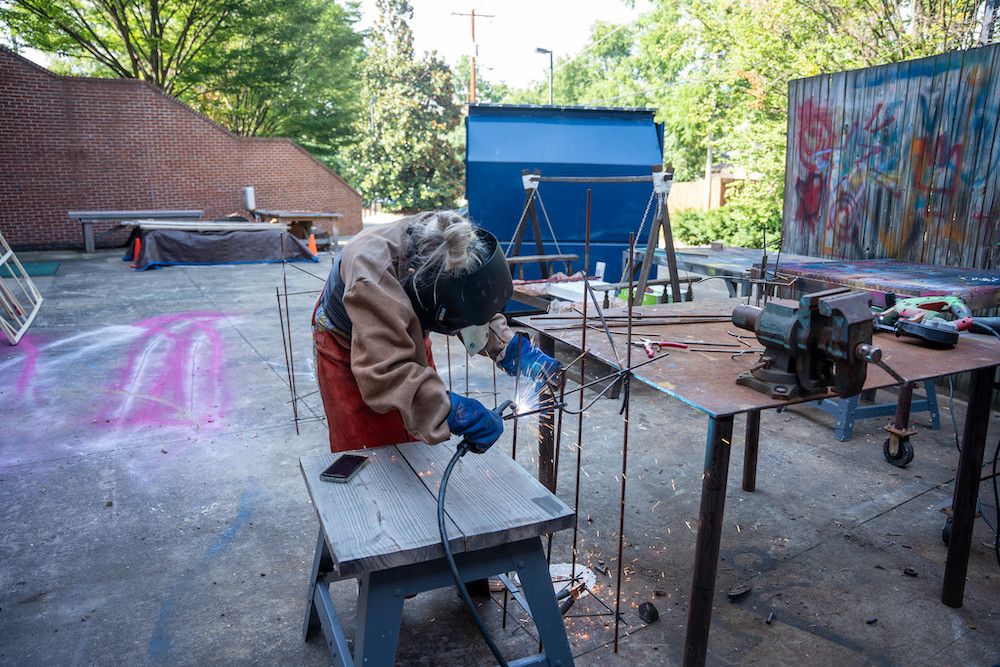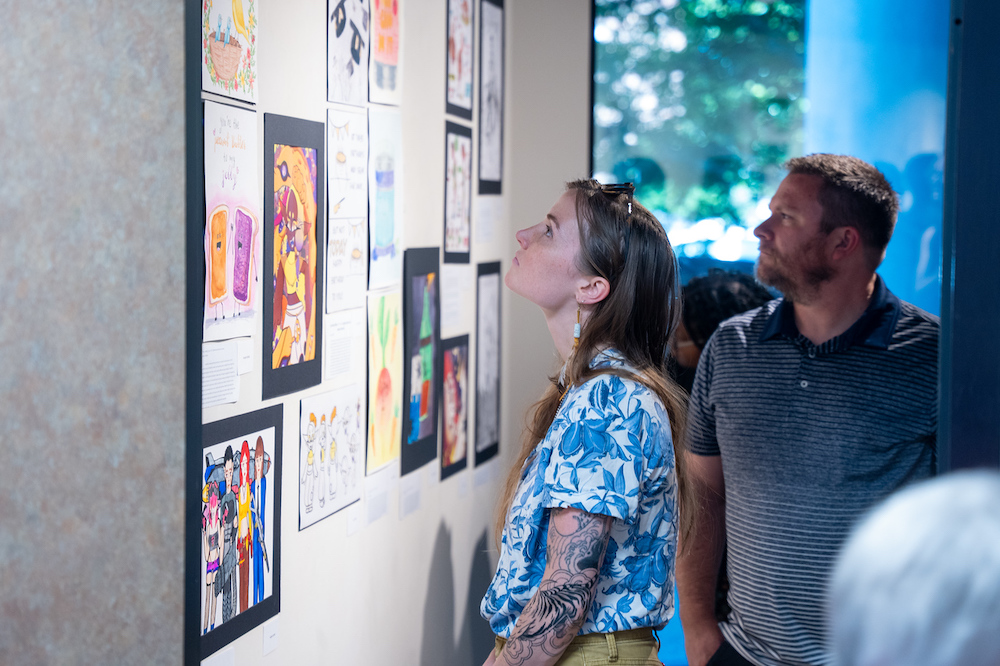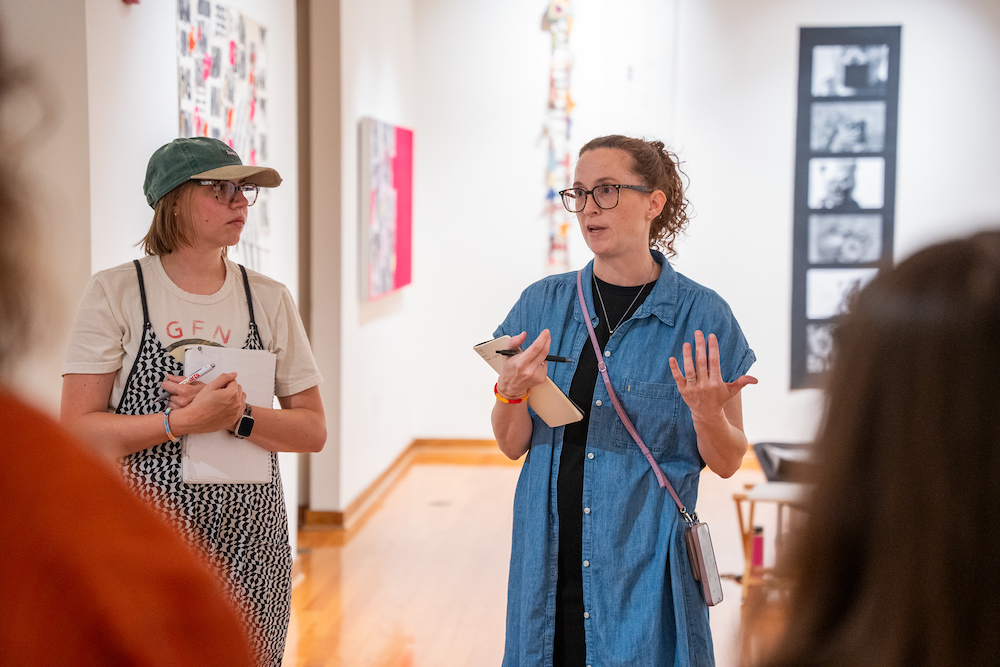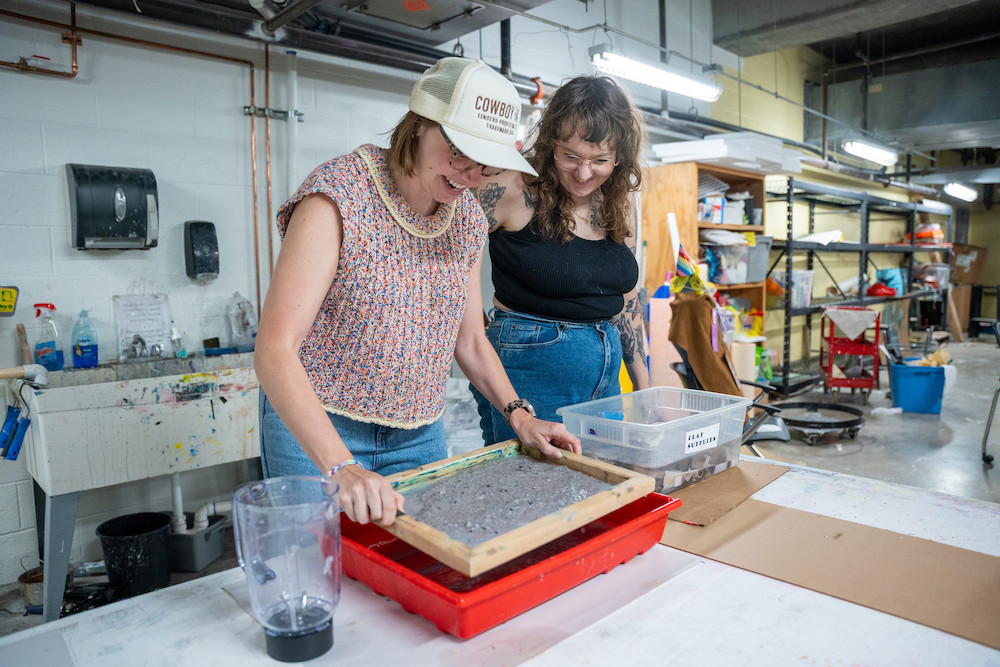Why get your MFA from the Watkins College of Art?
In the heart of Nashville, Belmont’s Watkins College of Art offers a Master of Fine Arts (MFA) in Visual Arts program unlike any other in the region. The only Visual Arts MFA in Middle Tennessee, this low-residency program provides a unique blend of independence and community, pushing students to expand their artistic horizons while maintaining the flexibility to balance their studies with work and family commitments.
Flexibility and Independence: A Program Designed for Artists' Lives
Watkins’ program's structure is a key selling point for many students. Consisting of intensive summer and short winter residencies, with students working independently the rest of the year, it offers a perfect balance of guidance and freedom.
Laurie Pannell, a recent retiree and writer of 32 years nearing the end of her MFA journey, explained, "We come together in the summer for 24 days, and then the winter for four days. But otherwise, we're working in our own studio on our own time, our own research. There's a lot of freedom and independence, and it's very flexible which really suits an artist's temperament."
For Pannell, enrolling in the program was "something I wanted to do for myself" after a long career and raising a family. This format allows for deep, focused study while accommodating diverse life circumstances. But the time spent together during residencies does pack a punch.
Program Director Kristi Hargrove noted that while several institutions have adopted low-residency models, Watkins stands out. "We have classes in studio and theory and art history, as well as a course in professional practices, during the summer. Most low-res programs do not offer this extended time together."

Artistic Growth: Pushing Boundaries and Deepening Practice
One of the program's strengths is its emphasis on connecting research with studio practice, encouraging students to think critically about their work and its place in the contemporary art world.
Pannell describes this as one of her most significant discoveries. “I've really learned how research is related to studio. That wasn't there in my previous practice – I would usually have a cute little idea, execute it and be done. But I've learned how to make my work have more meaning with more criticality and thinking about materiality and its place in the contemporary art world,” she explained. “And I hope to continue what I've learned in my practice when I graduate and hopefully find new ways to make contributions to the art community.”
This approach has transformed her artistic voice as she’s learned to add collision or an element that adds interest, layers or collision to her images. "My work is now bigger. It has graphic punch. It's colorful. I've actually been told, which no one would have ever called me this coming into the program with my sweet watercolors, that it's bold."
For younger students like Keria Nashed, who entered the program straight from undergraduate studies in photojournalism, the MFA offers a chance to slow down and explore new artistic territories. "Going into it thinking that I wanted to focus on photography, I've now expanded realizing that there's so much more that I could do and so much more that I could have learned," Nashed reflected.
Working with family archives, Nashed has found a way to tell her story as a second-generation Coptic Egyptian: "This has given me the space to look into history and educate myself on that and learn why things are the way that they are."
Something Nashed said she realized in observing the graduating class is that “this is all just process and learning.”
“There is no deadline on growth. We're still going to continue learning and honing our practice when we leave here,” she said. “The biggest compliment that I've gotten is that people can see where I've grown from the past semester. I just want to keep growing and making connections and learning from all these incredible people around me.”

Invested Faculty and Strong Community
Despite the program's low-residency nature, a strong sense of community develops among students and faculty. Nashed describes it as "a family that's deeply rooted," with alumni often returning to engage with current students.
Hargrove added, "We emphasize community, knowledge-sharing and encourage independent areas of interest. There is a deep commitment from the faculty to the program's mission and to the development of each student in our program.”
The students can feel the difference from the faculty's approach. "They have a really excellent set of professors who are not only knowledgeable, but they're kind. It's like a family here,” Pannell explained. “The professors are all invested and care about each of us personally – you can feel that from the get-go. And they push you outside of your comfort zone to really make progress. I needed that."
This individualized attention allows for tailored guidance and pushes students to grow artistically. "They get to know each of us on a personal level,” Nashed added. “That's what art does: it becomes really vulnerable and really personal."
As the only MFA program of its kind in the area, Belmont's offering stands out for its combination of rigorous study and artistic freedom. It provides a unique opportunity for artists at any stage of their career to deepen their practice, expand their theoretical knowledge and join a supportive artistic community.

See the Watkins Difference
Learn more about the MFA in Visual Arts, upcoming Portfolio Review Days and admissions requirements.


